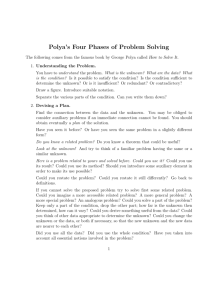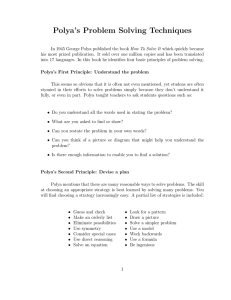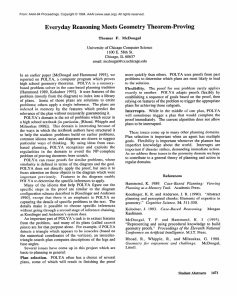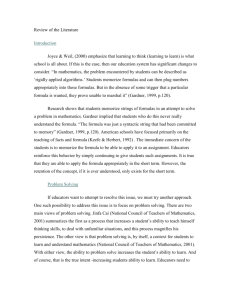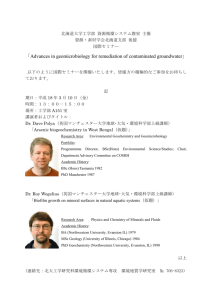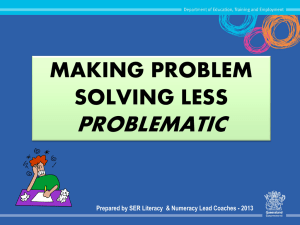ppt
advertisement
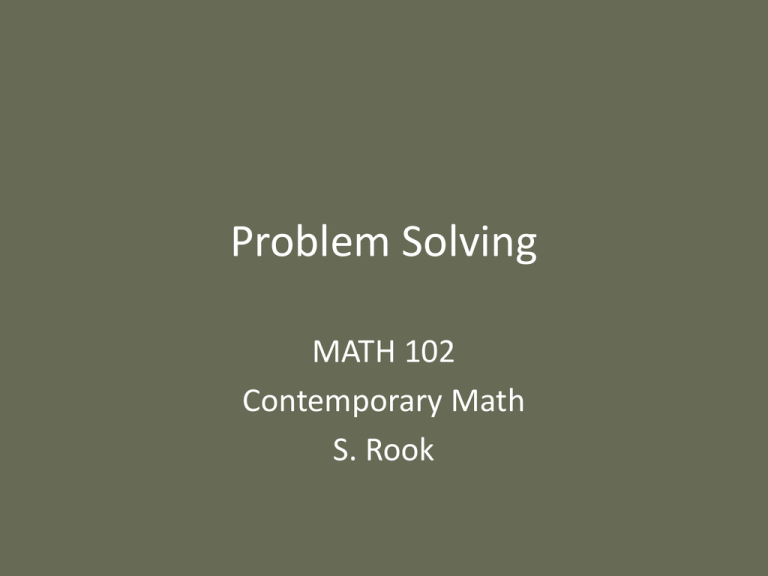
Problem Solving MATH 102 Contemporary Math S. Rook Overview • Section 1.1 in the textbook: – Polya’s four step method for problem solving – Problem Solving Strategies Polya’s Four-Step Method for Problem Solving Polya’s Four-Step Method for Problem Solving • George Polya was a famous mathematician (see pg 14 in textbook) who developed a systematic four step method for solving problems • Step 1 – Understand the Problem – Know what you are being asked to find – List what you know from the problem – Reread as many times as is necessary to fully comprehend the problem – Drawing pictures/diagrams often helps understanding Polya’s Four-Step Method for Problem Solving (Continued) • Step 2 – Devise a plan – May require a bit of ingenuity • Step 3 – Carry out the plan – Actually doing the math and answering the problem • Step 4 – Check the answer – Ensure that the answer makes sense in the context of the problem • Chances are that you will not think about EVERY problem in these 4 steps – You should at least think of EVERY problem in terms of planning and executing Problem Solving Strategies Drawing a Tree Diagram • Drawing a tree diagram is most helpful for a problem that can be broken down in terms of steps or stages • If the number of options in each stage is reasonable, a tree diagram can be used to list all possibilities – Suppose a soccer game can be won, lost, or drawn. What are all the different outcomes if we play three games? • The number of options in each stage do not necessarily have to be the same Drawing a Tree Diagram (Example) Ex 1: Suppose that we roll a 3-sided die with sides numbered 1, 2, and 3 and then a 4-sided die with sides numbered 1, 2, 3, 4. a) List the possible outcomes of the rolls using coordinate pairs. Make sure to indicate which part of the coordinate represents the 3-sided die and which part represents the 4-sided die. b) How many possible outcomes are there? c) How many of the outcomes was an odd number rolled on the 3-sided die? Problem Solving (Example) Ex 2: Solve. Try to plan before calculating. a) Approximately how long would it take a person to drive 375 miles if his vehicle has a rate of 60 miles per hour? b) Michael has cut a 40-foot long sandwich into three unequal pieces. The longest piece is three times as long as the middle-length piece and the shortest piece is 5 feet shorter than middle piece. What are the lengths of the three pieces? c) Alex Rodriguez of the NY Yankees and Magglio Ordonez of the Detroit Tigers had a total of 295 runs batted in. If Rodriguez had 7 more than Ordonez, how many did each have? Summary • After studying these slides, you should know how to do the following: – Understand Polya’s four-step process for problem solving – Use a tree diagram to help solve problems – Apply a variant of Polya’s four-step process to solve different types of problems • Additional Practice: – See the list of suggested problems for 1.1 • Next Lesson: – Inductive & Deductive Reasoning (Section 1.2)
